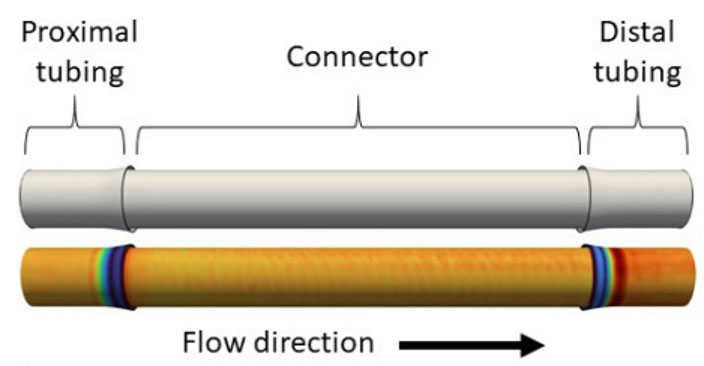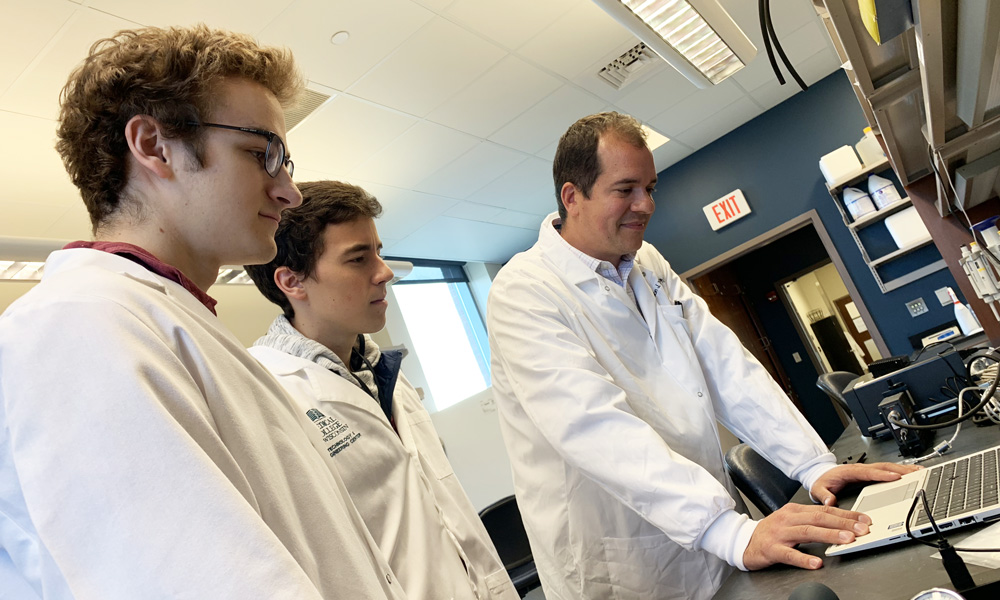Redesign of Pediatric ECMO Connectors for Reduction of Thrombogenicity
The use of Extra Corporeal Membrane Oxygenation (ECMO) is a vital component of treatment for many severe cardiovascular and pulmonary conditions, especially for patients awaiting transplant. However, patients treated with ECMO experience a greatly increased risk of stroke and pulmonary embolism. In particular, pediatric ECMO cases exhibit especially high rates of these conditions. Due to the supraphysiologic biomechanical forces exerted by these systems on the blood, thrombosis often ensues, especially in regions of abnormal wall shear stress.

Computational fluid dynamics (CFD) modeling has been performed on currently availableMedtronic straight connectors with their associated tubing as seen in ECMO circuits to determine regions of abnormal wall shear stress at typical clinical flow rates between 2-5 L/min. Based on this model, our labs have determined current straight connectors used in ECMO circuits exhibit both regions of unusually stagnant flow and elevated wall shear stress in close proximity at the point of connection. These unusual conditions may contribute to pathologic thrombus formation and platelet activation. Our labs are working to confirm these models in vitro using a closed loop physiologic ECMO pump system with the intention of comparing alternate connector designs to those currently in use.

Image Descriptions
Top: Micro CT imaging of junction between a 3/8x3/8 straight Medtronic connector as used in ECMO circuits. Profile used to generate mesh for CFD modeling.
Bottom: CFD model of current 3/8x3/8 straight Medtronic connector with WSS heat map. Dark blue regions of low WSS correlate to stagnant flow. WSS in highly increased red regions directly following stagnant flow.
Project Lead
 Alexander Armstrong
Alexander Armstrong
Research Technologist
Medical College of Wisconsin
View more CaRE Lab Research



 Alexander Armstrong
Alexander Armstrong
